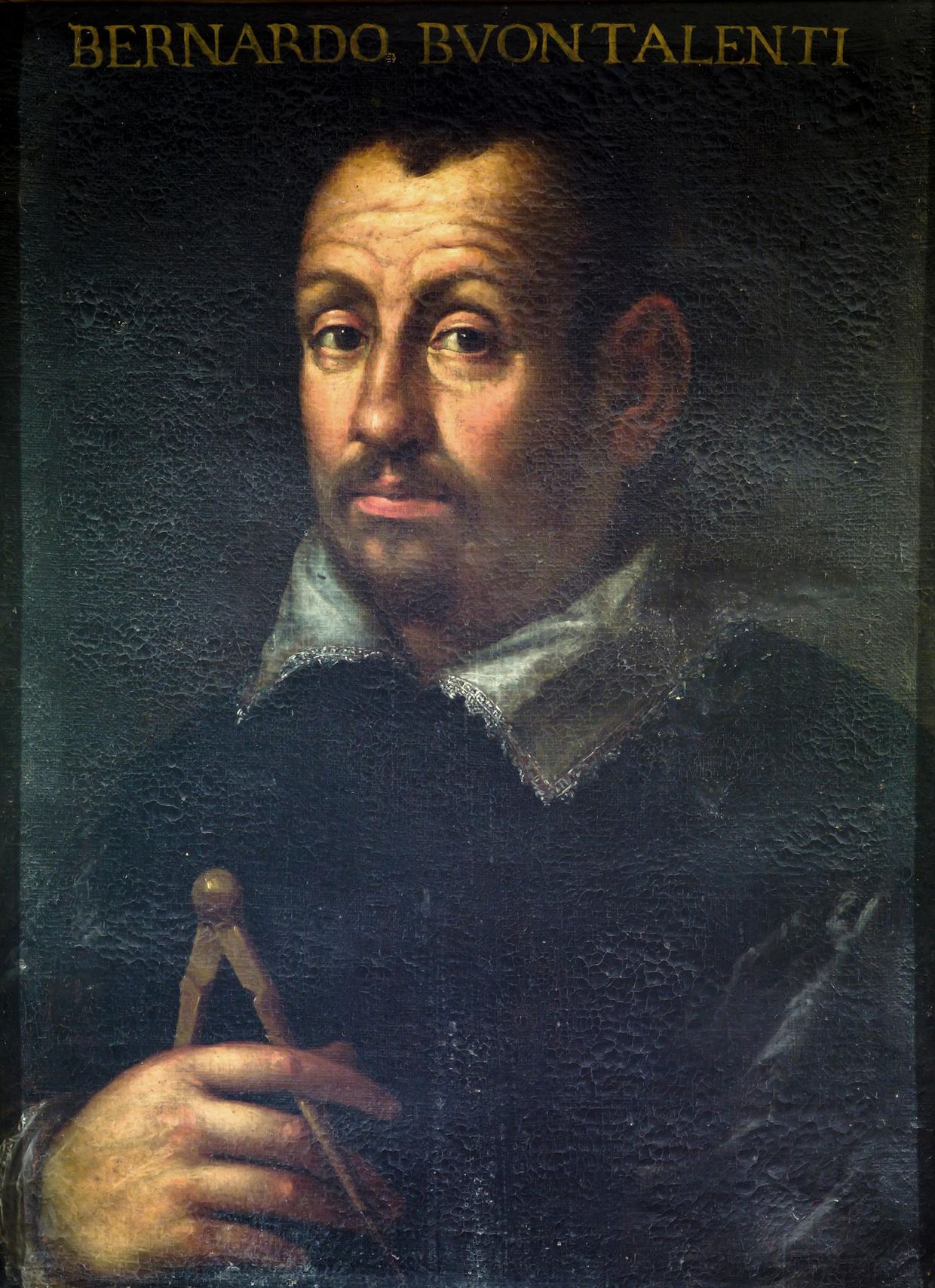Bernardo Buontalenti (Florence 1531–1608)
Architect, sculptor, military engineer, and set designer from a Florentine family, he was soon employed at the Grand Ducal court where he became a pupil of Giorgio Vasari and Francesco Salviati. He received a very thorough education and a complete artistic training that allowed him also to come into contact with the works of Michelangelo (whose funeral he contributed to with a large canvas) and Bartolomeo Ammannati. Associated with Niccolò Tribolo and Vasari himself in the most important Medici yards, he took on the role of superintendent after their deaths. He became court architect and directed the most important building sites under the reign of Francesco, to whom he was bound by a relationship of great confidence. He had already designed for the prince before the death of Grand Duke Cosimo I the Casino of San Marco and above all the Villa of Pratolino (1569-75), a model extra-urban palace for the European courts with its gardens, statues and hydraulic technology. For the large construction sites in the capital he designed the interior decorations for Palazzo Pitti and made many interventions in the Boboli gardens (including the Cave later known as Buontalenti’s Grotto); for the building site of Palazzo Vecchio, he allowed for the enlargement of the rear part of the building (and perhaps also for the arrangement of Piazza della Dogana and its buildings). His intervention in the Uffizi Gallery was very important, as he created the first museum of art of the modern age with his Gallery.
Here he also completed the Vasarian corridor, an elevated street that connects the Uffizi to Palazzo Pitti, where he created the octagonal tribune, another museum space designed to collect the best of the Medici collections. Buontalenti’s importance in the history of the spectacle is immeasurable: after his first interventions in Vasari’s installations (having already participated in 1565 in the Cofanaria in Palazzo Vecchio with the preparation of a cloud and automatons in the background) he coordinated the ephemeral apparatus for the baptism of Prince Philip in 1575. The great season then began with the progress of the Uffizi building site and the construction of the Grand Ducal Theatre and the Teatro della Dogana o di Baldracca, destined for the performances of the Comici dell’Arte. In these spaces between 1586 and 1589, the canons of the machinery for the intermedi are defined. The great staging of L’Amico fido already saw the prevalence of the machinery for musical intermedi over the text of the play, and the staging in 1589 of La Pellegrina (for which he created the scenery, costumes and machines, as well as ‘directing’ the entire event) laid the foundations for the Baroque theatre. Though not perfectly congruent with the new tastes and the entourage of Grand Duke Ferdinand, the apparatus was still to be the creator of the celebrations for the wedding of Maria de’ Medici with the staging of Rapimento di Cefalo in 1600. Almost symbolically, his final performance for the Grand Duke was to be the designing of the Medici Chapels, the great mausoleum of the reigning family.
